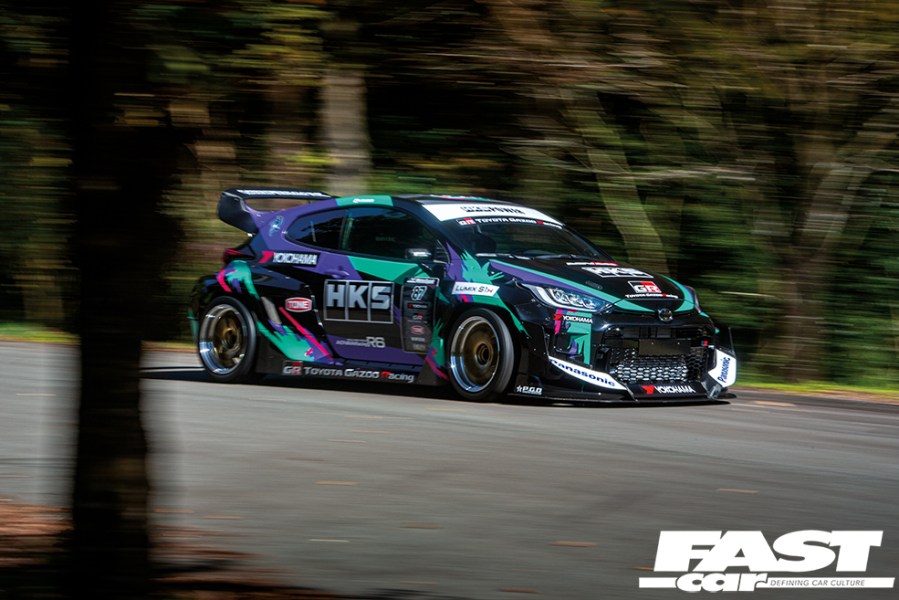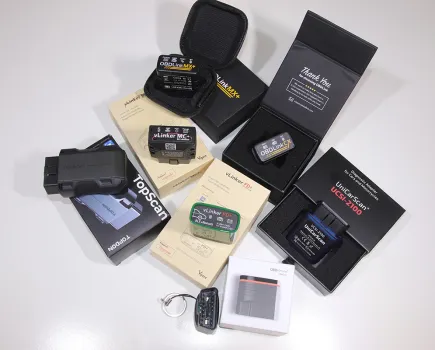Increasing performance doesn’t always mean increasing your power. Here are 21 tips for better handling.
When you’re modifying a project car, the key is always balance. At the end of the day, speed comes most willingly when you look beyond just what’s under the hood. After all, it’s one thing having loads of power, but making all of that power usable is another task entirely.
A great example of this is when you see little classic Minis battling with muscle cars and European coupes in historic racing. Sure, the more powerful vehicles might leave the Mini behind on the straights, but over the course of a lap, the pocket-rocket catches up through the corners. Why? Because it’s a better handling car. So, when building your own performance machine, you want to aim for the best of both worlds – a car with both straight-line punch and poise through the bends. That, is the ultimate key to performance.
Keep reading to find out how to maximize your ride’s potential.
Tips for Better Handling
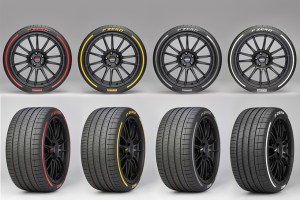
Tires
Our 21 tips for better handling starts here with the only point of contact between your car and the road’s surface. Tires are one of the single biggest factors influencing your car’s grip, braking, accelerating and handling attributes. This is why tire selection and maintenance is so critical if you want your car to corner effectively. Choosing the right tire will depend on what you use the car for, as although a set of semi-slick tires such as Yokohama’s AD08R or Toyo’s Proxes R888R will have huge grip in the dry, they can be much less effective in standing water or snow and ice than an all-weather tire.
Whatever you do though, don’t skimp on the brand of tire, as there is a reason why the big name brands cost more and, if you are planning on pushing your car to the limit, you will notice a difference. And when that difference could be whether you make the corner or not, it’s well worth the extra wedge. Finally, pay attention to your tyre pressures. Even a small increase or decrease in pressure can have a big effect on the way your car handles, especially on a trackday where higher tire temperatures can increase pressure significantly, so experiment until you find the sweet spot for your driving style.
For more guidance, check out this article to figure out how to choose the best tires for you.

Alignment
You can have the best suspension parts in the world, but if the wheels are not pointing in the right direction, your car still won’t handle, accelerate, or brake as well as it should. Going to a performance geometry specialist, such as Midlands-based Center Gravity, or at least a conventional alignment place with specific settings you want your suspension dialed to, can make a huge difference over the OEM production settings. Exactly what the settings are will depend on your performance requirements and driving style, but get it right and the car will finally perform to its potential.

Suspension
As long as it’s set-up correctly, uprated suspension gives a massive handling improvement compared to the standard shocks and springs. Of course, simply slamming the car as low and as hard as it will go isn’t a performance improvement, as suspension needs to be able to move to absorb the bumps and keep the car stable. For fast road use, good quality uprated shocks and springs are a must, with a good brand of adjustable coilovers, such as BC Racing, Bilstein or KW, an excellent choice for those more serious about their car’s handling or wanting to further fine tune their setup when venturing onto the track.
Want to know more about suspension? Check these out:
- Suspension modification guide
- Coilovers vs Air Ride
- Best Car suspension brands
- Best suspension for a Honda Civic Type R
- Best suspension for a Mazda RX-7
- Best suspension for a Nissan Skyline GT-R
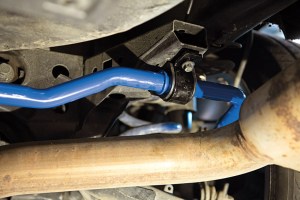
Anti-roll bars
As the name suggests, anti-roll bars (ARBs) control your car’s body-roll during hard cornering. Most cars come with ARB’s as standard, but by fitting a thicker, torsionally-stiffer item, from the likes or Eibach or Whiteline, you can further limit your car’s roll without resorting to overly stiff springs. You can even tweak the effect they have, as many ARBs are adjustable to cater for different driving styles and setups.
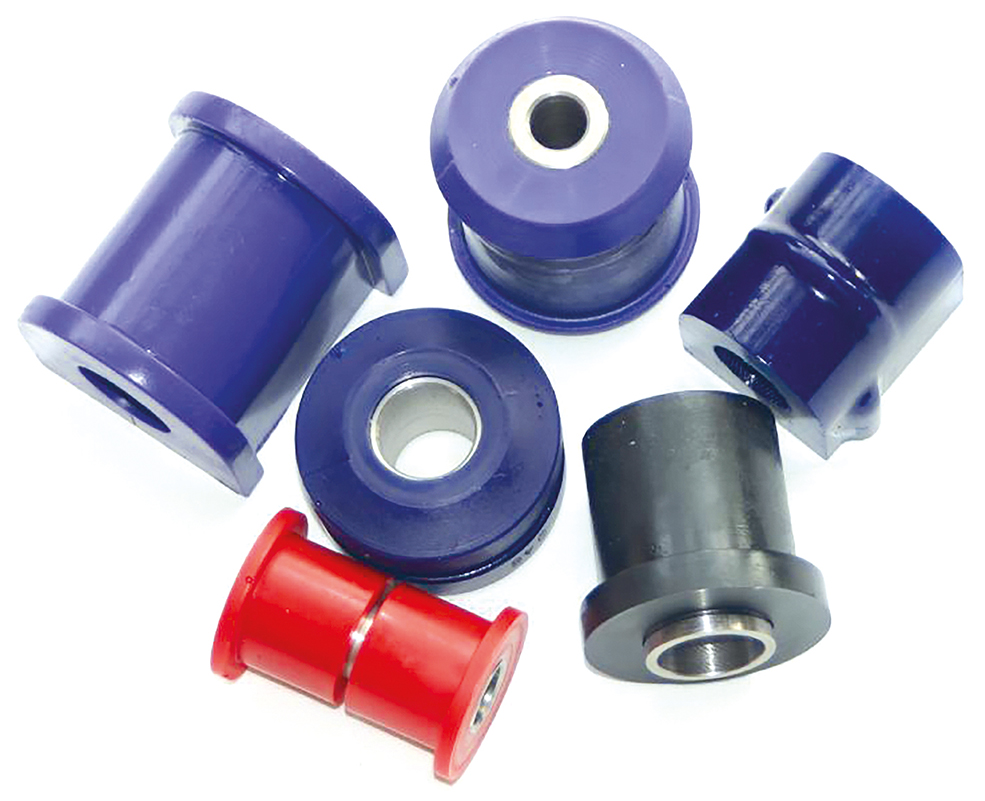
Bushes
Replacing the standard rubber suspension bushes with stiffer polyurethane items from the likes of Hardrace, Polybush or SuperPro is a great way of making any car feel far tighter and more responsive to your inputs. With the majority of tuned and modified cars being at least a decade old, the positive effect is magnified too, as the standard bushes are often far past their best. While replacing every one of them with uprated items is a big job, it will feel like a far newer, more responsive and far more performance orientated car once completed.
Chassis bracing
Anything you can do to reduce your chassis flexing under hard cornering will lead to an improvement in how your suspension works and, ultimately, how your car handles. Racecars have roll cages that not only protect the driver in an accident, but also provide rock solid bracing for the chassis. While a full weld-in roll cage is not especially practical in a road car, you can get similar, if reduced, benefits by fitting various braces such as strut and chassis braces. Don’t expect massive improvements, but most bracing bars are relatively cheap and really do work, helping sharpen up the handling.
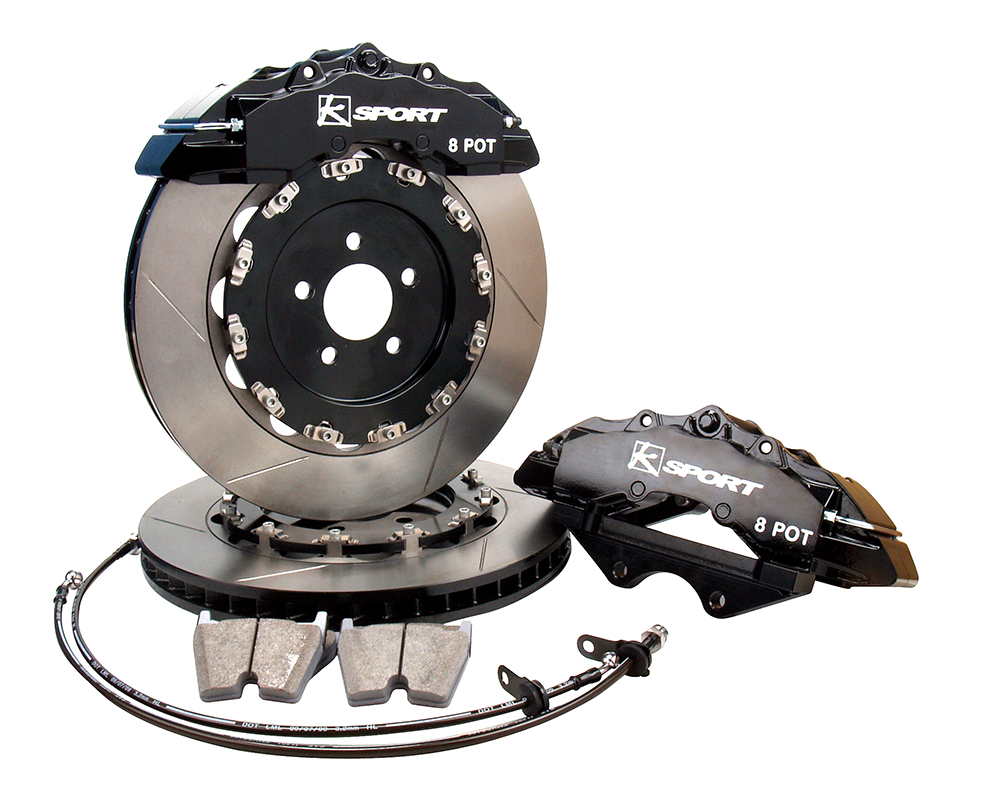
Brakes
Being able to brake harder means you can complete the braking phase of the corner approach in a quicker time, meaning you have more time to settle the car after releasing the brake before turning in. This has a two-fold effect on your lap times, in that you get the cumulative benefit of shorter, sharper braking times, from higher speeds, plus the improvement in corner speed through having a more stable car, which maximizes available grip, throughout the corner. A simple pad upgrade can give good improvements on the road, but for serious track use, you can’t beat a big brake kit such as those from K-Sport, TarOx or Alcon.
Check out some of the best aftermarket brakes suppliers, here.
Seats & harnesses
While one advantage of bucket seats is that they are usually much lighter than your standard seats, the biggest advantage is how it improves your driving. Of course, we know the purpose of a bucket seat is to hold you in place more effectively, but the enormous difference it makes to your ability to drive to your limits is often underestimated. With normal sports seats you subconsciously put a lot of effort into keeping steady and upright when cornering hard, and the minute you fit bucket seats, such as those available from Cobra or Corbeau, plus a set of harnesses, you immediately transfer all of that effort and energy into your driving. Add in the fact that you sit lower and feel more connected to the chassis and it means you can feel what the car is doing so much better, giving you far more control at the limit.
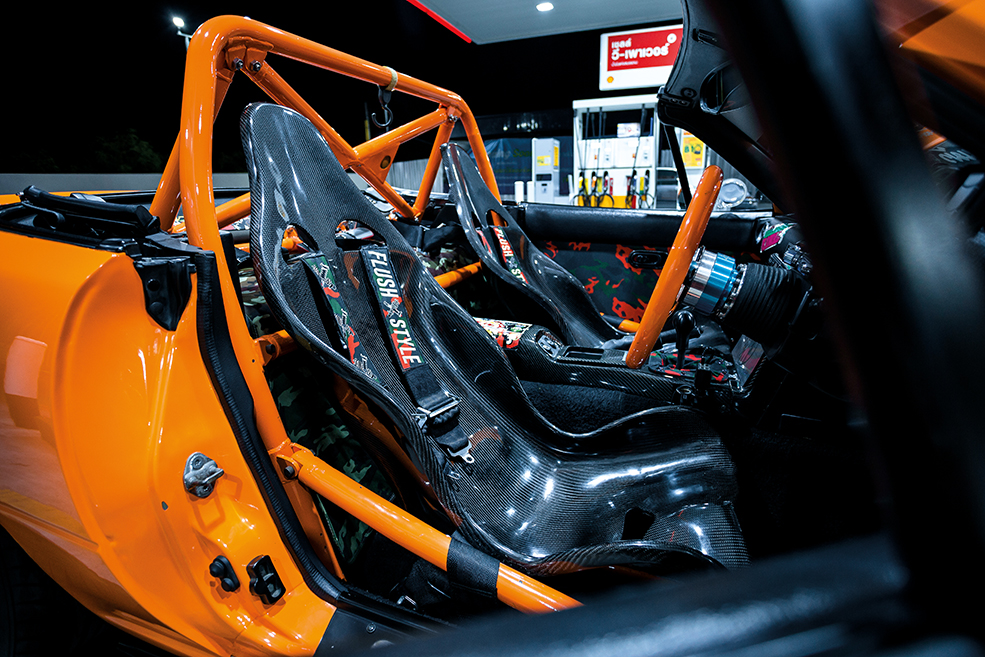
Seating position
And it’s not just the seat itself that gives you benefits in car control, but the position of it in relation to the steering wheel can also reap major improvements in your ability to corner faster. This is where anyone rocking the ‘gangster lean’ is losing out, as being too far away from the wheel reduces your leverage on the wheel and your ability to control the car. If you have long legs and need the seat far back, then consider investing in a deeply dished steering wheel or extended hub to bring the steering wheel closer to your chest. Ideally, with your wrists on the top of the wheel, you should still have a visible crook at your elbows. Check out the options at demon-tweeks.com.
Lightweight wheels
We all understand that the lighter a car is, the faster it will be, but by far the most effective part to lighten is the wheels. Not only are the wheels unsprung weight, which has a more significant effect on performance than sprung weight (mass which is supported by the suspension), but it’s rotating weight too; and a weight reduction here is crucial to improving cornering. While this sounds far-fetched, reducing each wheel by just 5kg, which is easily done by swapping from many OE wheels to lightweight aftermarket items, can take seconds off lap times and significant chunks off in-gear acceleration times too, not to mention making the car feel far more nimble and responsive in the bends.
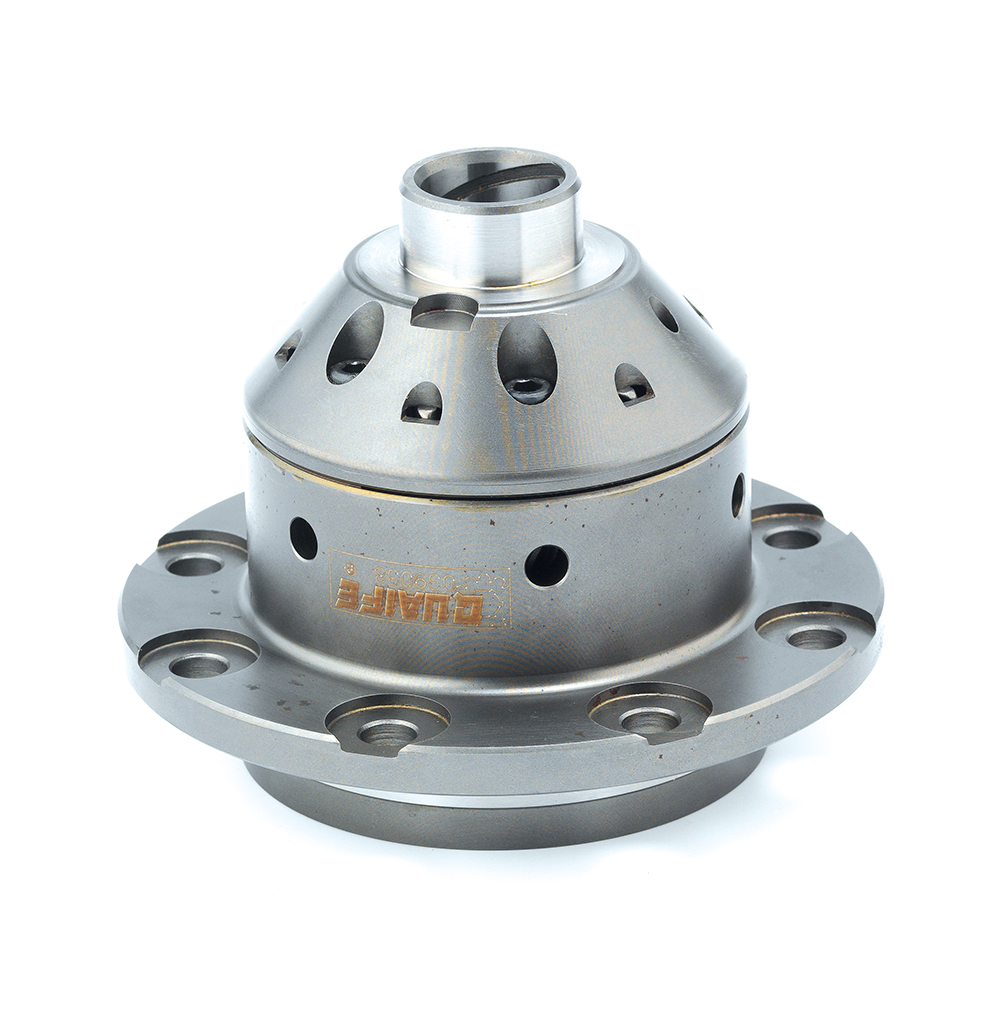
LSD
Aftermarket limited-slip differentials from the likes of Mfactory, Quaife and Wavetrack are almost vital on any hard driven performance car, even with standard power levels. From the factory, cars tend to have either an open diff, or a very mild and ineffective LSD, and fitting an aftermarket one, not only drastically increases your traction under acceleration and braking, but most effectively when cornering. We’ve seen otherwise standard hot hatches knock seconds off their lap times simply by fitting an LSD – that’s far quicker than you’d go with the same money spent on engine mods.
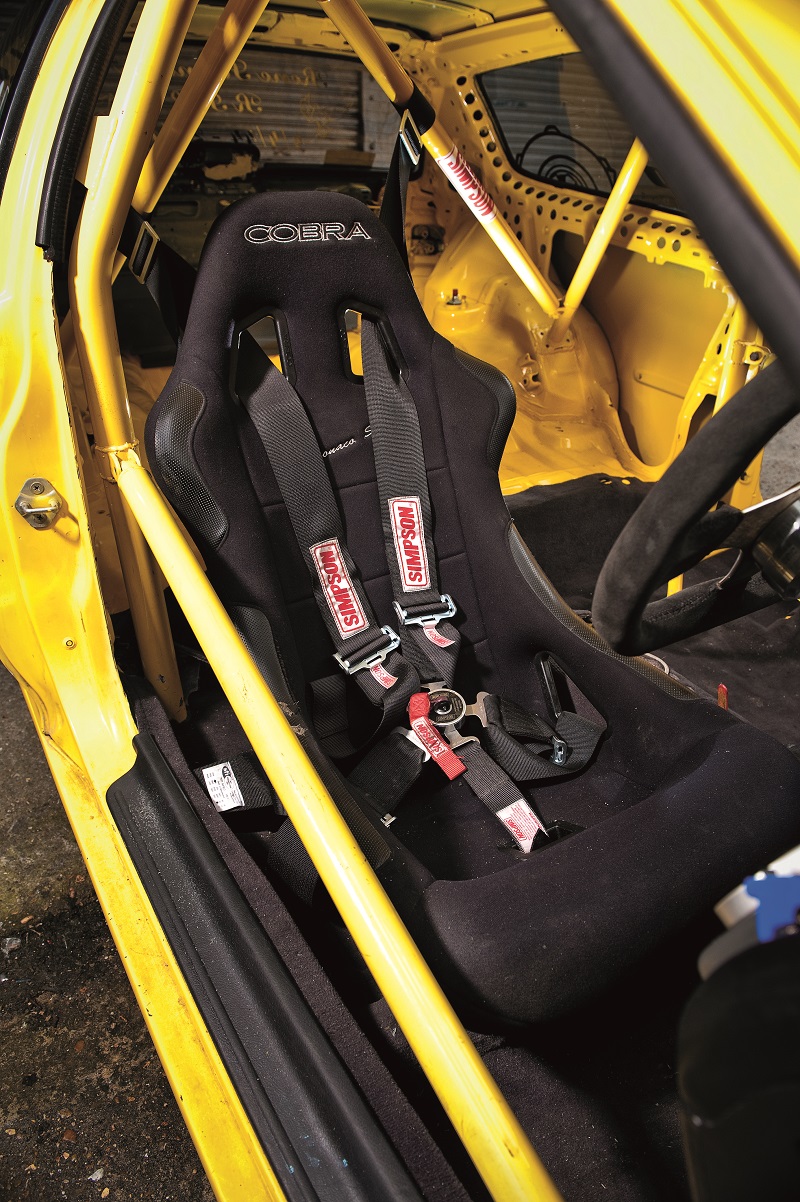
Lighten interior
While we don’t need to tell you how to lighten your interior, what we will tell you is: put some thought into it. Back seats? Well, despite that often being the first thing that people remove, they often don’t weigh much at all. Front seats however can weigh more than the rest of the interior put together, so savings of over 25kg per seat by swapping to some racing bucket seats is quite common. Carpet? Again, the carpet is often binned, but they weigh next to nothing on all but the most luxurious cars. You’re better off leaving it in but removing the sticky tar sound deadening underneath instead, as this can account for up to 10-20kg!
Lighten Exterior
Carbon or fibreglass panels tend to weigh far less than standard steel ones, and one of the best way to improve your car’s cornering is to make it lighter. Be aware that cheaper carbon panels may be reinforced with fibreglass, so may not save much weight, and some cars have aluminum bonnets which are already surprisingly light. Full fibreglass or carbon bodywork, even the roof, is an option on many cars, and while it will cost thousands, you could save well over 150kg, making a massive difference to how the car performs and handles.
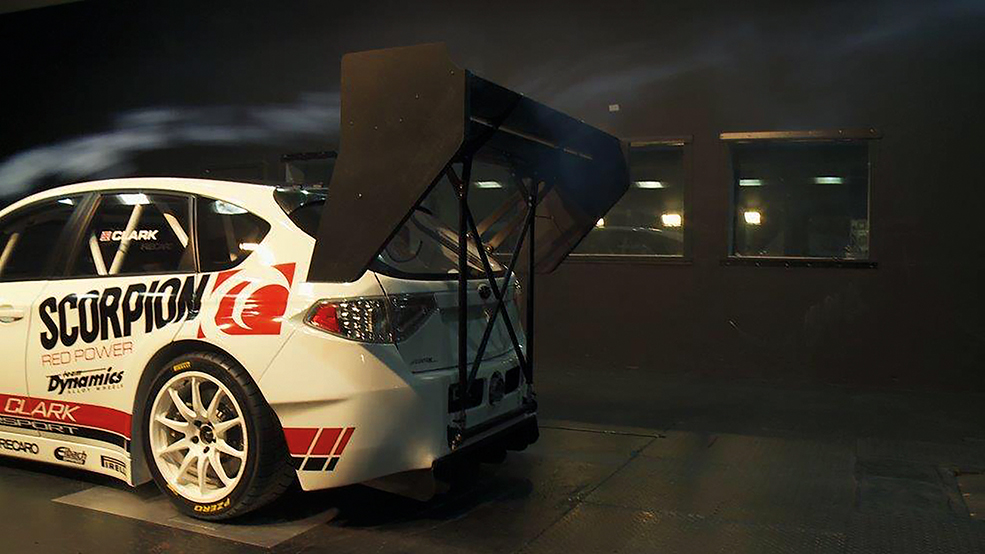
Aero
Aero is a tricky subject, but with some thought and common sense you can have a very noticeable improvement in your car’s cornering without consulting an aerodynamicist. Cornering is about grip and this can be improved with items like splitters, spoilers, side skirts, diffusers and wings, which help push the car into the ground increasing the effective grip of the tires and allowing faster cornering. Be aware though, that it’s all about balance. Adding too much rear wing, without a suitable increase in front-end grip, could induce understeer and vice versa.
Slow in, fast out
While this common mantra is not strictly how top pro drivers approach their cornering, for everyone else, it’s a great way to learn good cornering technique. What we mean by slow in, fast out is that you should sacrifice a small amount of corner entry speed in order to prioritize the exit, which in turn will mean getting on the gas earlier and allow you to carry more speed onto the next straight, gaining a larger advantage on a fast section, while only losing a small amount in a slow section.
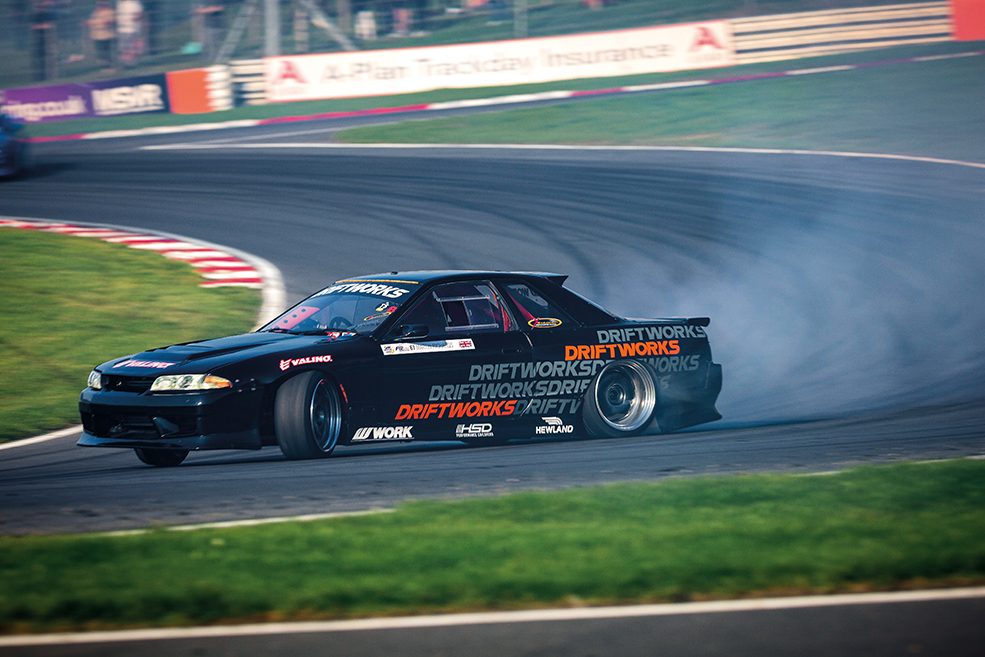
Don’t drift
Taking bends while looking out of the side window with smoke pouring off your rear tires may look and feel fantastic, but it is by far the slowest way around a corner. If you want to be fast and gain a new PB lap time, stick to the racing line and leave the drifting to the boys and girls in the BDC.
Centre of gravity
You can improve your car’s cornering by simply lowering its centre of gravity. This can be done by adding a set of lowering springs or coilovers, but can also be accomplished by reducing weight high up in the car with things like Perspex windows or a carbon roof panel, or even just lowering your seat height to bring your own bodyweight lower in the car.
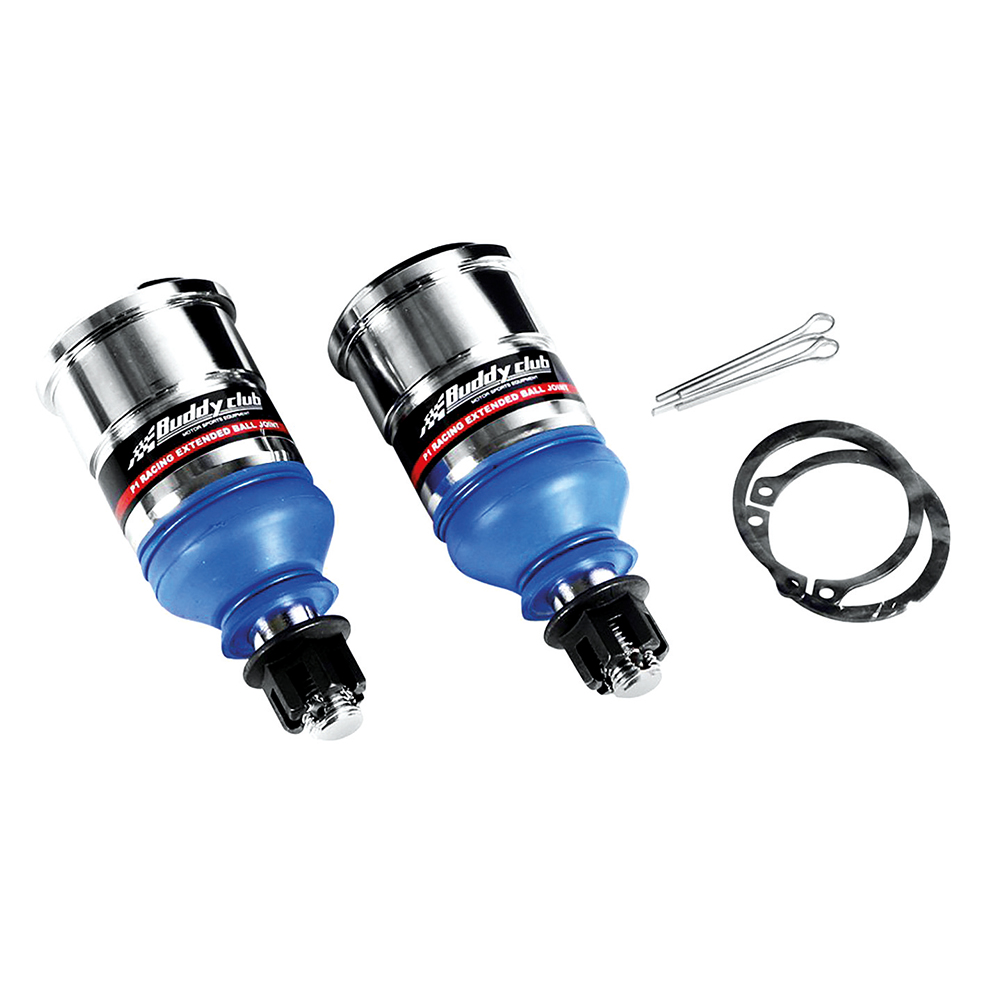
Roll centre adjustment
When a car is lowered, not only is the centre of gravity lowered (a good thing), but also the car’s roll centre (a bad thing). This is due to the change in angle of the lower suspension arms when a vehicle is lowered. This actually increases the amount of weight transfer and body-roll you will experience while cornering. To correct the issue, you can fit roll centre correction extended-shaft ball joints such as those from Hardrace. These lower the ball joint at the hub improving the angle of the lower suspension arms and raising the car’s roll centre improving cornering and steering with reduced body-roll.
Trail braking
While most of the time it’s advisable to have completed your braking and have the car on a balanced throttle (i.e. maintaining a constant speed without increasing or decreasing) before committing to the turn entry, there are occasions where trailing a light braking force much deeper into the corner can have benefits. This is because, although you will lose a small amount of overall grip (by reducing the weight over the rear tires) you will gain extra front grip to improve bite on turn-in and also allow the car to rotate easier, lining you up for the exit earlier, meaning you can get back on the gas sooner too.
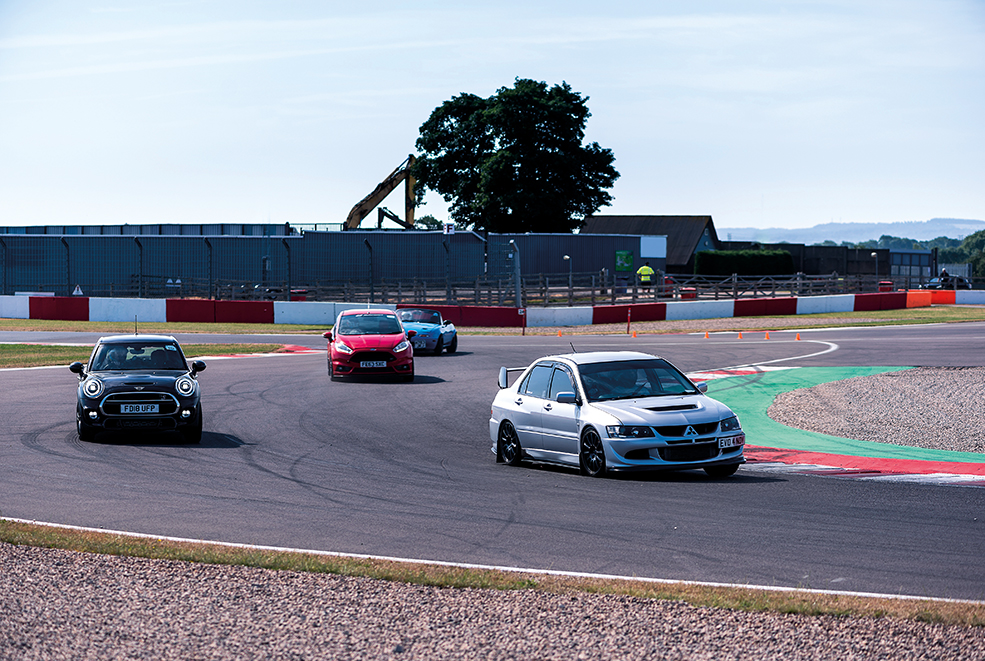
Weight transfer
Every input you make to the car has an effect on the weight and its distribution across the four tires. Under acceleration the weight moves to the rear, under braking, or lifting the throttle, weight is thrown forwards. This is also the case with steering inputs too, where lateral loads travel to the opposite side to the way you are steering. This sudden shift of weight unsettles the car on its suspension and reduces grip on the tires with the least weight. But by being smooth and progressive with your inputs you can reduce the unsettling effect of this weight transfer and even use it to your advantage.
Seat time
You can read up on cornering technique all you like, but you’ll only see real improvement by putting those things into practice and the best way to do that is with track time. This way you can push your car to its limits safely without endangering other road users too. And a good way to gain even more out of a track session is to get a qualified instructor in the passenger seat for a few laps too. They can give you more advice in a few laps than you could get in a whole season of trackdays – listen up and get cornering faster, quicker.
If you’re in Britain, you can find your nearest trackday at www.trackdays.co.uk.

